I have a set of 2D points and I want to find the potential largest empty circle. By that, I don't mean to code the Largest Empty Circle algorithm.
Here's an image trying to explain my words.
As you can see, there are points inside that circle, so what I want is an algorithm that given that set of 2D points, could compute that circle.
That set of points represents a wall of a sewer which contains a hole. The problem is that this hole may be corked, may contain some dirt at one or more sides of the circle. So, when you laser detect that part, you don't obtain a perfect circle, but kind of a semicircle. What I want to find is the original hole, the clean hole, when there is no dirt. When I say potential, I mean the original hole. In the image, the green circle is the original hole and the points inside that circle are some kind of dirt. The final purpose of this is to decide whether the hole is clean or dirty (Detecting how many points are inside that green circle and decide how dirty it is)
Another example of how it is supposed to be in real life:
Here you can see that the hole has dirt in the bottom part (could be any side of the hole), so when you laser detect it, you don't obtain the circle, but a bunch of points with the upper part of the circle as empty. What I want is from that set of points where you can only see the upper part of the circle empty, reconstruct the original hole, as it was when clean.
Plus, I attach two images of the point cloud, from two different perspectives, so you can know what I am working with.




